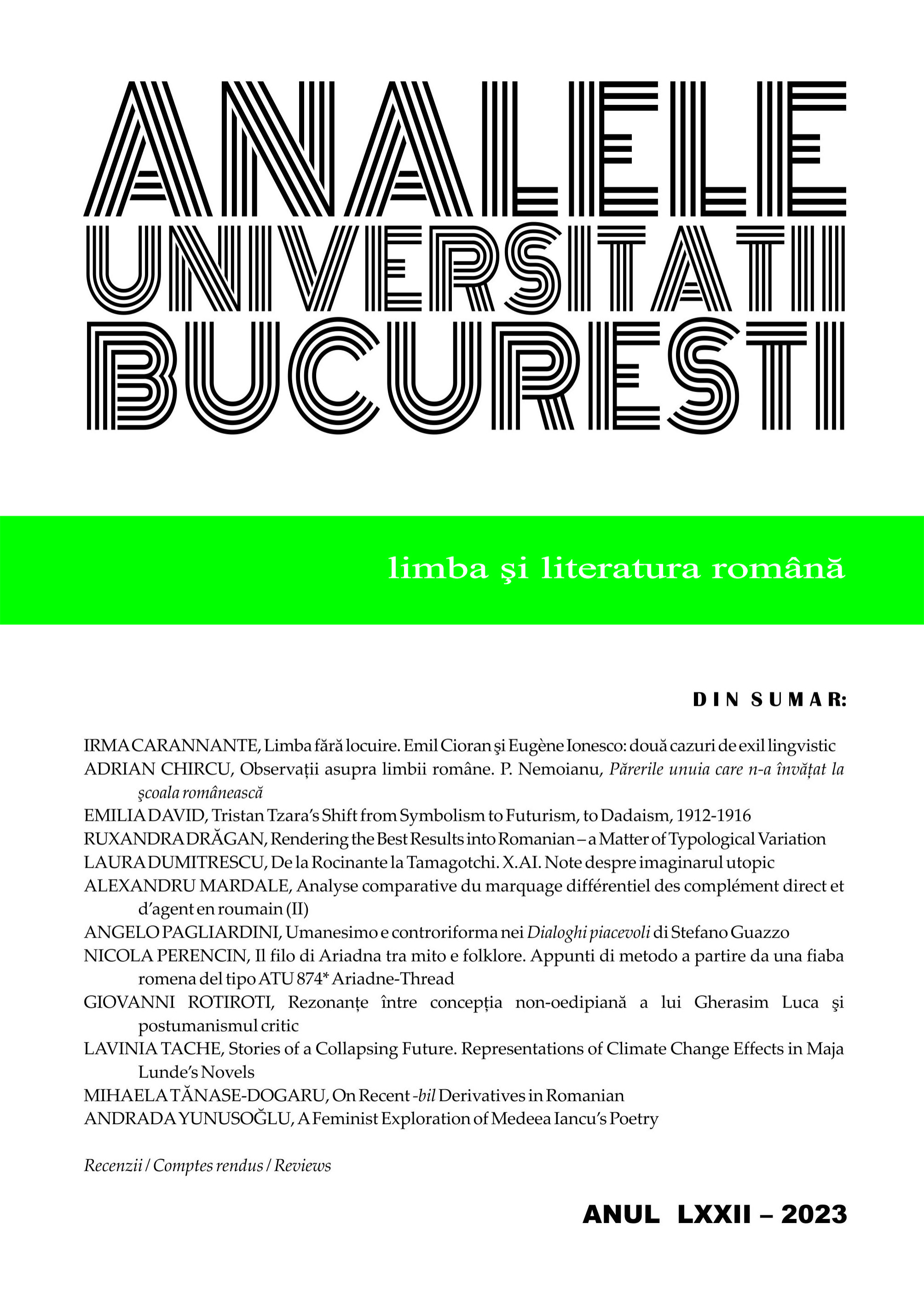Tristan Tzara’s Shift from Symbolism to Futurism, to Dadaism, 1912-1916
Tristan Tzara’s Shift from Symbolism to Futurism, to Dadaism, 1912-1916
Author(s): DAVID EmiliaSubject(s): Romanian Literature, Theory of Literature
Published by: Editura Universităţii din Bucureşti
Keywords: Symbolism; Postsymbolism; Futurism; anti-Marinettian Futurism; Dadaism; paroliberismo; simultaneous poem; theatrical practices;
Summary/Abstract: My paper will present Tristan Tzara’s artistic development from his early Symbolist days via Futurism to his Dadaist days in Zurich. In particular, I shall discuss how Futurism lingered on in the first phase of Dadaism and in Tzara’s Dada poetics (1916-1918). I shall first analyse some traits of his Symbolist poetry, composed in the 1910s, until his departure from Romania. I shall argue that his orientation towards Futurism was possible thanks to his Symbolist beginnings, an aesthetic the young Tzara shared with many Futurists, including F.T. Marinetti. Following a reconsideration of the network of cultural relations forged by the Romanian writer between the young Dada group in Zurich and members of the Futurist movement in Rome, Naples and Mantua, or more precisely: between anti-Marinettian representatives of Futurism who edited the magazines Noi, Le pagine, Procellaria and Brigata, I shall demonstrate that Tzara continued to be open to Futurist influences, albeit from the Florentine and Ferrarese strands, which were more moderate and less dogmatic than the Milanese circle around Marinetti. Examining some Tzara works in Cabaret Voltaire and Dada, I shall demonstrate certain Futurist affinities in his Dadaist production, in particular with regard to the graphic-typographic features of his poems and the performative tactics in his theatrical practice.
Journal: Analele Universităţii Bucureşti. Limba şi literatura română
- Issue Year: LXXII/2023
- Issue No: 72
- Page Range: 33-51
- Page Count: 19
- Language: English, Romanian

